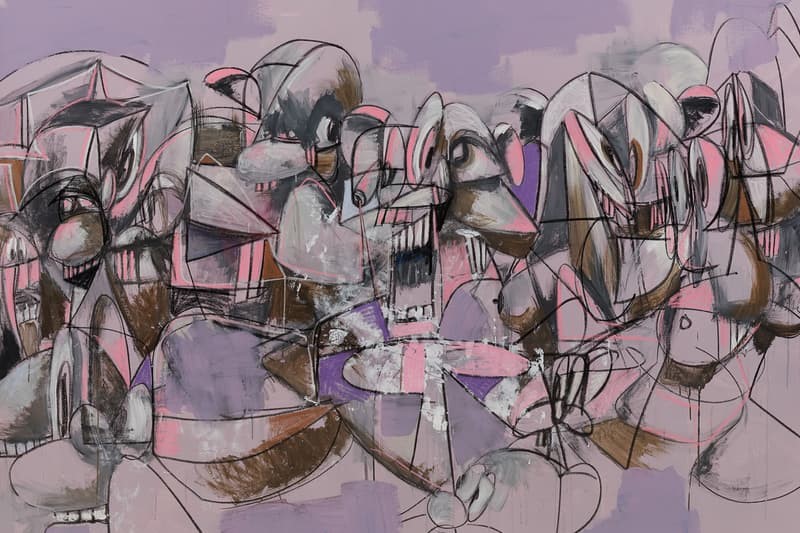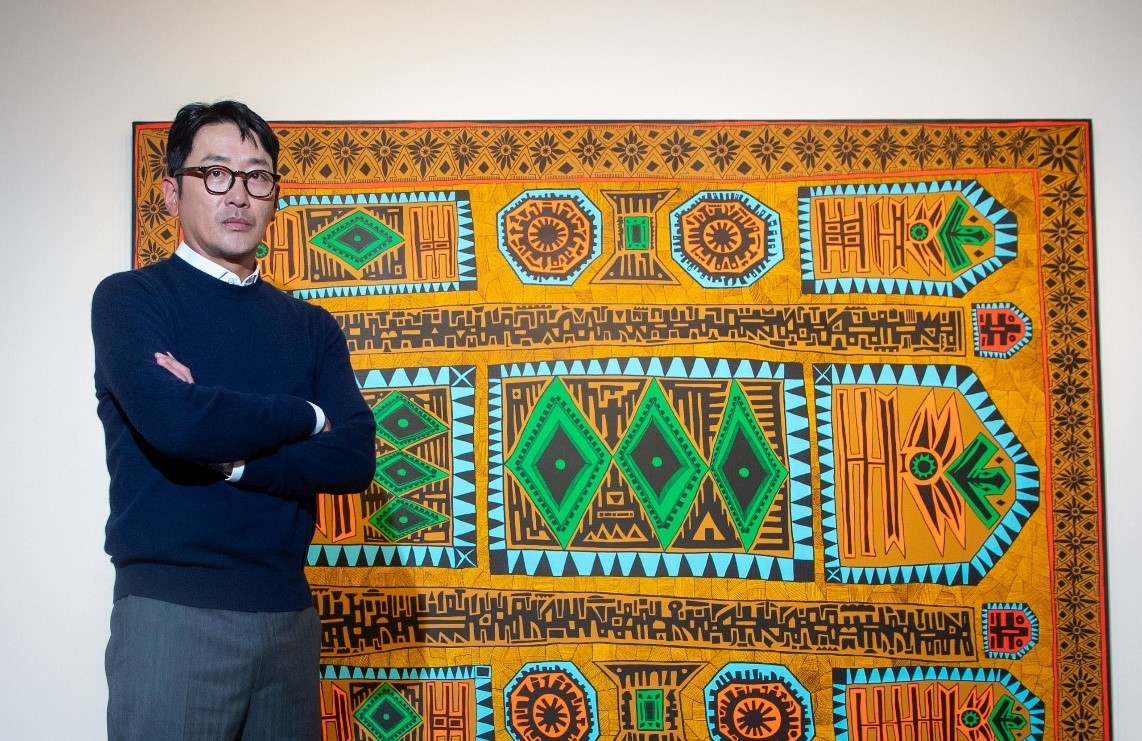In the contemporary art market, George Condo is recognized for his original style and strong portrayal of characters. His works fetch high prices at auction and often appear in the collections of high-profile collectors.

George Condo ©A.E.KÖCHERT
This popularity explains why each of his exhibitions
attracts media and audience attention, and Condo holds a unique position in the
Korean art market.
However, it has been argued that Condo's success is
largely driven by his name recognition and commercial success, rather than an
assessment based on aesthetic depth or art historical value. While it is clear
that his works make a strong impression with their unique visual language, it is
arguable that these elements are more driven by market forces and demand than
by intrinsic artistic value.
Key Works at Recent Auctions
In recent years, George Condo's works have fetched high prices at several auctions, proving their popularity in the market.

George Condo, Force Field, 2010 ©Christie’s
In July 2020, **Force Field (2010)** sold for approximately $5.85 million at Christie's Hong Kong auction, demonstrating the significant value of his work in the international art market.

George Condo, Red Portrait Composition, 2022 ©PSNEWS
Then, in September 2022, **Red
Portrait Composition (2022)** sold for approximately $2.8 million at Frieze
Seoul, confirming the high demand for his work in Korea.
 George Condo, Purple Compression, 2011
©Artist
and Hauser
& Wirth
George Condo, Purple Compression, 2011
©Artist
and Hauser
& WirthIn March 2023, at Art Basel Hong Kong,
**Purple Compression (2011)** sold for approximately $4.75 million (KRW 6.2
billion), once again proving his work continues to be highly sought after.
The Activity and Career of George
Condo
Born in 1957 in New Hampshire, USA, George Condo emerged on the art scene in the early 1980s through the East Village art movement in New York City. He was associated with Jean-Michel Basquiat, Keith Haring, and others.

Francis Bacon, Self-Portrait, 1969 ©Francis Bacon
His work is known for its distorted portraits, influenced by **Pablo Picasso** and **Francis Bacon**, and is considered a new interpretation of the modern portrait.
 George Condo, Mental States, 2000 ©TATE
George Condo, Mental States, 2000 ©TATEGeorge Condo creates surreal and
satirical portraits that explore human psychology and social irony. His Mental
States series is considered to exemplify these qualities and is held in major
art collections, including the Museum of Modern Art (MoMA) in New York and the
Centre Pompidou in Paris.
Aesthetical and Art Historical Value
George Condo's works is often criticized for borrowing or reinterpreting the styles of established masters such as Picasso and Francis Bacon, and while it is clear that his work speaks a visually distinctive language, it does not create a new artistic discourse or revolutionize existing formality.
 (Left) Picasso’s Maya au bateau (Maya with the boat), 1938,
(Right) George Condo’s Father O'Malley (The Priest), 2004 ©Sotheby’s
(Left) Picasso’s Maya au bateau (Maya with the boat), 1938,
(Right) George Condo’s Father O'Malley (The Priest), 2004 ©Sotheby’sAlso, while his work is said to address the
complexities of human psychology, it is often criticized for its reliance on ‘Visual
Shock’ aimed at commercial success. While these visual shocks may be effective
in attracting public attention, they are limited in their ability to lead to
in-depth discussions in an art historical context.
Furthermore, the high prices that his works fetch in
the market can be interpreted as a result of the concentrated market attention
and investment. This does not necessarily correspond to the intrinsic value of
the work itself, which is why Condo has been criticized as a prime example of 'Art
for Commercial Success'.
Conclusion
George Condo is an example of
a contemporary artist who enjoys commercial success and popularity, but such
success does not prove art's historical significance.
Therefore, rather than
blindly accepting the fame of international artists, it is necessary to
critically analyze their works and redefine the unique identity and direction
of Korean art based on them, which is essential for Korean art to go beyond
simply following the market trend and establish its own discourse and position.
 George Condo, Self-Portrait,
2024 ©Newsis
George Condo, Self-Portrait,
2024 ©NewsisTo this end, the Korean art
world needs to revitalize critical discourse and shed light on the intrinsic
value of artworks and their art historical context. Art criticism is an
important tool that balances the market and the artwork, helping to rediscover
the artistic value of works beyond the logic of mere commercial success. With a
stronger critical function, Korean art will be able to create a sustainable and
deep art ecosystem that is not subject to the logic of the market.
Jay Jongho Kim graduated from the Department of Art Theory at Hongik University and earned his master's degree in Art Planning from the same university. From 1996 to 2006, he worked as a curator at Gallery Seomi, planning director at CAIS Gallery, head of the curatorial research team at Art Center Nabi, director at Gallery Hyundai, and curator at Gana New York. From 2008 to 2017, he served as the executive director of Doosan Gallery Seoul & New York and Doosan Residency New York, introducing Korean contemporary artists to the local scene in New York. After returning to Korea in 2017, he worked as an art consultant, conducting art education, collection consulting, and various art projects. In 2021, he founded A Project Company and is currently running the platforms K-ARTNOW.COM and K-ARTIST.COM, which aim to promote Korean contemporary art on the global stage.












